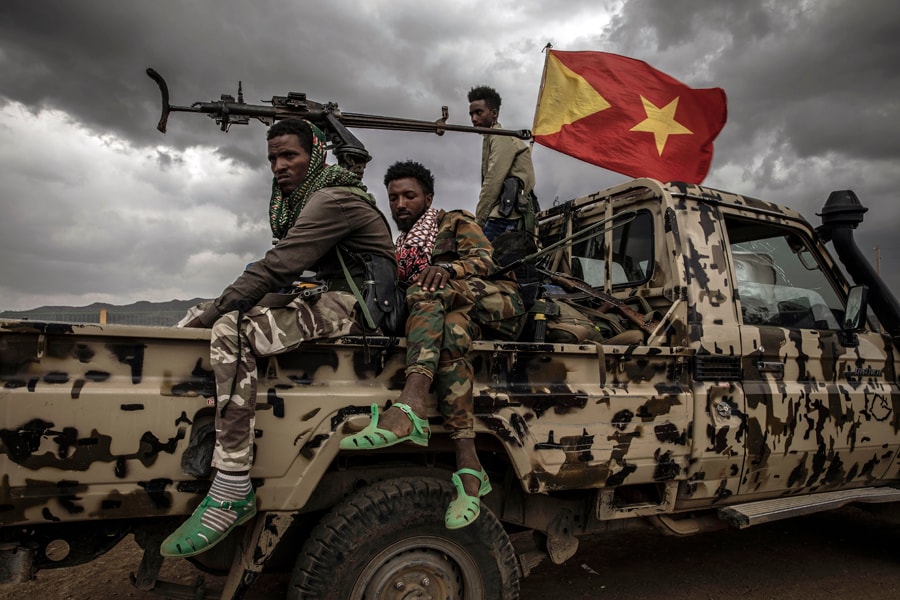
The Nobel Peace Prize that paved the way for war
New evidence shows that Ethiopia's prime minister, Abiy Ahmed, had been planning a military campaign in the northern Tigray region for months before war erupted one year ago, setting off a cascade of destruction and ethnic violence that has engulfed Ethiopia, Africa's second-most-populous country
 Tigrayan soldiers outside Mekelle, the capital of the Tigray region of Ethiopia, on June 29, 2021. (Finbarr O'Reilly/The New York Times)
Tigrayan soldiers outside Mekelle, the capital of the Tigray region of Ethiopia, on June 29, 2021. (Finbarr O'Reilly/The New York Times)
Secret meetings with a dictator. Clandestine troop movements. Months of quiet preparation for a war that was supposed to be swift and bloodless.
New evidence shows that Ethiopia’s prime minister, Abiy Ahmed, had been planning a military campaign in the northern Tigray region for months before war erupted one year ago, setting off a cascade of destruction and ethnic violence that has engulfed Ethiopia, Africa’s second-most-populous country.
Abiy, a Nobel Peace Prize laureate seen recently in fatigues commanding troops on the battlefront, insists that war was foisted upon him — that ethnic Tigrayan fighters fired the first shots in November 2020 when they attacked a federal military base in Tigray, slaughtering soldiers in their beds. That account has become an article of faith for Abiy and his supporters.
In fact, it was a war of choice for Abiy — one with wheels set in motion even before the Nobel Peace Prize win in 2019 that turned him, for a time, into a global icon of nonviolence.
The Nobel win stemmed largely from the unlikely peace deal Abiy struck with Isaias Afwerki, the authoritarian leader of Eritrea, within months of coming to power in 2018. That pact ended two decades of hostility and war between the neighboring rivals, and inspired lofty hopes for a transformed region.
©2019 New York Times News Service







